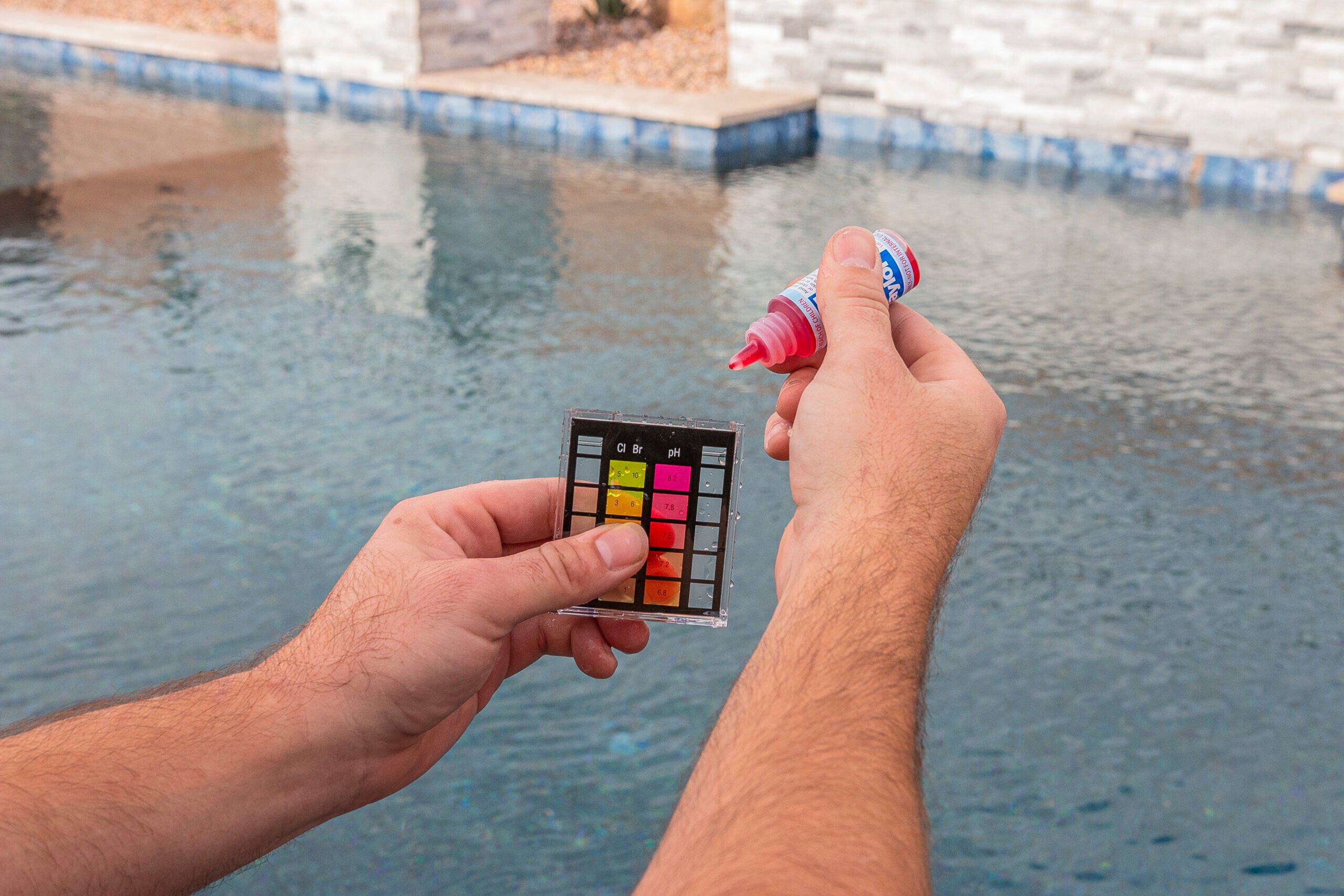
Many new swimming pool owners think that once their pools are up and running, they can just let it take care of itself, but unfortunately, this is not the case. Your water chemistry is constantly changing due to environmental factors, usage and even the toys you put in the pool. Learn five factors that play a major role in your swimming pool water chemistry, and how you can control problems in this area.
Swimming Pool Water Chemistry: pH Balance
pH is the major factor you should keep balanced when maintaining your swimming pool water chemistry. pH refers to the level of acidity in your water, and comes from the use of chemicals to keep it balanced and free from contaminants and algae growth. You want your pH to remain between 7.4 to 7.6 at all times to avoid burning eyes and to allow for free chlorine use.
Alkalinity
Closely connected to pH, the alkalinity is the amount of base, or hydrogen ions, in your water. It also refers to the ability of your water to contain and reduce loss of hydrogen. Keeping your alkalinity balanced helps to keep your pH levels optimal when additional acids or bases are introduced to the water. You want your pool’s alkalinity to be between 80 to 150 parts per million (PPM).
Calcium Hardness Levels
Your pool has dissolved calcium salts in its water. These can increase or decrease from the oils and salts on peoples’ skin, from debris that fall into your pool and from the chemical reactions that form from maintaining your water balance. You want to keep these levels around 250 ppm. If the calcium level is too low, it can create pitting in the plaster, while high amounts of calcium makes the water cloudy and can result in scaling.
TDS (Total Dissolved Solids)
When a pool has been in use for a long time, things like suntan lotion, chlorides, dirt, debris, algaecides and other contaminants can be introduced into the water from leaves, tree bark, dirt, skin chemistry and other factors. TDS can’t be avoided, but it should be kept under 450 ppm.
Chlorine Levels
Chlorine is, for many people, a vital part of keeping the chemistry in their water properly balanced. Too much chlorine, and you’ll end up with burning in the eyes and a strong odor. Too little, and the pool’s alkalinity and pH will be out of control, leading to things like cloudy water and algae growth. Ideal chlorine levels should be at 0.2ppm or less, and free chlorine should be in the range of 1 to 3 ppm.
If you are looking for the best advice and service to maintain your pool, turn to the company that built the very first in-ground pool and developed the first in-ground pool filtration system. Shasta Pools and Spas is able to remodel your existing pool, build you a brand new one and provide the very best in Phoenix area pool maintenance. With springtime upon us, now is the time to get started! Read about our pool services and give us a call for answers to all your questions today.
Dhruv Gangwal is the Marketing Director at Shasta Pools, Arizona’s leading pool builder. With extensive experience in strategic marketing, consumer behavior, and the evolving trends of outdoor living, Dhruv is dedicated to helping homeowners make informed, confident decisions about their pool investments. He works closely with Shasta’s design and sales teams to craft educational resources that simplify the pool-buying process and highlight the latest innovations in backyard living. Dhruv’s articles provide practical advice that homeowners can trust.

